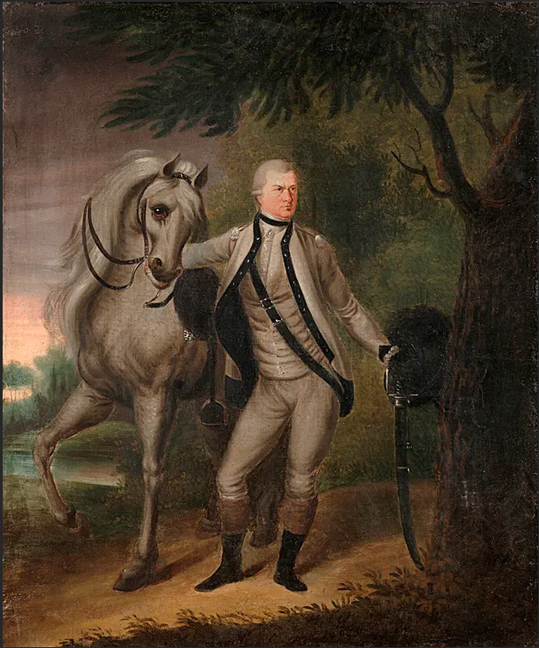Hamilton Versus Wall Street: The Core Principles of the American System of Economics by Nancy Bradeen Spannaus (Bloomington: iUniverse, 2019)
“The purpose of this book,” Ms. Spannaus declares, “is simple: to establish once and for all that the first U.S. Treasury Secretary, Alexander Hamilton, was the founder of an American System of Economics which provided the unique basis for building the United States into an industrial powerhouse.”[1] This purpose is laudable and she achieves it masterfully. The decades Ms. Spannaus has spent studying Hamilton’s economic and political thought is evident, and the clear strength of this volume is her exegesis of it. As she writes in her introduction, Hamilton recognized that what was necessary to consolidate what had been achieved in the United States’ victory in the War of Independence was “to form a strong union, with a constantly improving economic base.”[2]
In Hamilton’s view, this required the young republic to go beyond its predominantly agricultural system and to develop a manufacturing, industrial capacity as well. “Not only the wealth, but the independence and security of a Country, appear to be materially connected with the prosperity of manufactures. Every nation, with a view to these great objects, ought to endeavor to possess within itself all the essentials of national supply.”[3] Contra to Jefferson and the agrarians within the soon-to-be Republican Party, Hamilton understood that America’s destiny and material prosperity lay not just in the industry of yeomen cultivating the continent’s verdant fields, but in the industry (and capital) of entrepreneurs and laborers developing the raw material pulled from them into something more.
This is the cornerstone from which all of Hamilton’s economic thought was built—a national bank, the funding of a national debt, all of it—and Spannaus’s clearest success in this book is her emphasis of Hamilton’s Report on Manufactures as the key to understanding the Hamiltonian system. Indeed, her third and fourth chapters outlining the Report are required reading for anyone with the desire to understand those views, but disinclined to read nearly ninety pages of an eighteenth century economic tract.
She continues by making compelling connections between the principles Hamilton laid down at the end of the eighteenth century and those implemented by Abraham Lincoln in the nineteenth and (to a somewhat less compelling extent) Franklin Roosevelt in the twentieth.[4]
What complicates the simplicity (and success) of Spannaus’s purpose is the conclusion that she draws from her knowledge of Hamilton’s economic thought: that he was more Anglophobic than Anglophilic, and that his principles would have stood squarely against Wall Street in its historical and present incarnation. The common belief held by Hamilton’s critics and admirers alike that Hamilton “is the father of Wall Street and the financial premises and methods which characterize it today” is, in her telling, “one of the most dangerous lies of all” in understanding Hamilton’s thought.[5]
To accept her postulate, one must also accept her sweeping, entirely negative assessment of both entities and the assumptions she intersperses throughout the book. To wit:
That American System [developed by Hamilton] is the very antithesis of the British imperial system of economy which the American Revolution was fought against, a system which is based on a degraded notion of mankind as a variety of animal, animated by narrow passions, and thus fated to be ruled by an allegedly superior class, i.e., the nobility. The British System has presided over the most horrendous exploitation of mankind (just see the case of India and Africa), while allowing a financial elite to accumulate untold wealth and power. It lives on today in the world of supranatural financial institutions, including the mega-banks on Wall Street, which sacrifice human lives to financial profit all around the world.[6]
Such an absolutist outlook does a grave disservice to the aforementioned purpose she articulates at the beginning of the book—indeed, it is as if that purpose and the title of the book are at war with each other throughout, for it is nearly impossible to square Hamilton’s writings with these views.
Without question, Hamilton enthusiastically joined the American cause almost immediately upon his arrival from St. Croix—and wrote passionately to his newly-adopted countrymen urging them to do the same. This patriotism was not born from a conviction that the British empire was inherently evil or was presiding over “the most horrendous exploitation of mankind,” but because Americans had to defy the British pursuing their own self-interest so that Americans could maximize their own. “A vast majority of mankind is intirely biased by motives of self-interest. Most men are glad to remove any burthens off themselves, and place them upon the necks of their neighbors.”[7] Parliament was no different, who, “with a view to the ease and advantage of itself, and its constituents, would oppress and grind the Americans as much as possible.” Americans must look to their own self-interest as the British did to theirs and continue to resist. This, Hamilton went on to argue, would likely lead Parliament to realize that Great Britain and the American colonies shared the same interests. (It didn’t.)
Hamilton’s own formative experiences, and the extensive study he made of human nature and history, in addition to economics, as a young man had mostly dissuaded him from seeing human nature in terms of good and evil (as his eventual rival Jefferson would), but had convinced him that it is natural for humans to act in accordance with their own self-interest. He was an admirer of the British economic system for just this reason: because its design channeled “monied men” pursuing their own self-interest and profit in a direction that benefitted the wealth of the country at large. America’s economic crisis following the war was because those with wealth had no interest in upholding the republic’s credit or currency. The only certain way to fix this, and to generate liquidity, was “to engage the monied interest immediately in it by making them contribute whole or part of the stock and giving them the whole or part of the profits.”
This is what the Bank of England did so successfully and to such benefit to Great Britain, uniting “public authority and faith with private credit . . . Had it not been for this, England would never have found sufficient funds to carry on her wars; but with the help of this she has done, and is doing wonders.”[8] Spannaus correctly points out that Hamilton did not want to clone the Bank of England in the Bank of the United States, but he certainly admired fundamental principles of the former and sought to instill them in the latter.
It was this positive assessment, and an overall appreciation for the British economic and political system, that led Treasury Secretary Hamilton to cross into the province of State Secretary Jefferson and engage in sub rosa diplomacy with unofficial British representatives in America, all in the hope that a closer connection between the two could be achieved. “I have always preferred a Connexion with you, to that of any other Country, We think in English, and have a similarity of prejudices, and of predilections.”[9]
It was also this assessment that renders it at best dubious that Hamilton would have ever been an inveterate foe of Wall Street, as Spannaus’s Hamilton is. Would he have seen many aspects of Wall Street, and modern investment markets, that he would like to alter? Yes, of course—Hamilton scarcely encountered anything that he did not energetically want to adjust. But he was a fervent believer in the public and private benefit of stock exchange and credit (even if, as Spannaus points out, he was largely disinterested in growing his own wealth). Wealth, in whatever form, left on its own profits only the holder, but when deposited or invested, mulitiplies itself to the holder’s and other’s benefit.
It is evident, for instance, that the money, which a merchant keeps in his chest, waiting for a favorable opportunity to employ it, produces nothing ‘till that opportunity arrives. But if instead of locking it up in this manner, he either deposits it in a Bank, or invests it in the Stock of a Bank, it yields a profit, during the interval . . . His money thus deposited or invested, is a fund, upon which himself and others can borrow to a much larger amount.[10]
Wall Street has indeed been a place where the mindset has been “geared toward short-term financial gain per se, rather than actual economic growth,” and where individuals and large entities have eschewed “investment in the physical health and welfare of the population” by lying, cheating, and stealing “in favor of personal profit”—but that is not all it has been.[11] It has also facilitated the dynamic that Hamilton described above: people of wealth depositing or investing their wealth to create more wealth for themselves, for others, and for the country at large. It has done both the good and the bad—and therefore deserves a large share of the credit and blame for what America has become today.
The first U.S. Treasury Secretary, Alexander Hamilton, may not be the father of Wall Street, but what Wall Street is—and what the United States of America is—is a natural product of the Hamiltonian economic system. Spannaus excels in explaining that system, but, in her attempt to dispel radical misimpressions of Hamilton, errs in avowing ones of her own.
PURCHASE THIS BOOK FROM AMAZON
(As an Amazon Associate, JAR earns from qualifying purchases. This helps toward providing our content free of charge.)
[1]Nancy Bradeen Spannaus, Hamilton Versus Wall Street: The Core Principles of the American System of Economics (Bloomington: iUniverse, 2019), ix.
[3]“Alexander Hamilton’s Final Version of the Report on the Subject of Manufactures, [5 December 1791],” Founders Online, National Archives, founders.archives.gov/documents/Hamilton/01-10-02-0001-0007, accessed September 29, 2019.
[4]In drawing arrows between the economic program of Hamilton and the New Deal principles implemented by Roosevelt, Spannaus shares an overly-mythologized version of the New Deal. There were certainly components of it that Hamilton would have supported, but the chaos and negative effects created in the uncertainty of Roosevelt’s self-professed “experimentation” would have reminded Hamilton of the bedlam that existed during the Confederation years. For a more in-depth discussion of this, see Amity Shales, The Forgotten Man: A New History of The Great Depression (New York: HarperCollins Publishers, 2008).
[5]Spannaus, Hamilton Versus Wall Street, x.
[7]“A Full Vindication of the Measures of the Congress, New-York 1774,” in Joanne B. Freedman, ed., Hamilton: Writings (New York: The Library of America, 2001), 18.
[8]“To James Duane,” ibid., 83.
[9]“Memorandum by George Beckwith on a Conversation with Hamilton,” ibid., 523.








2 Comments
What an excellent review by Geoff Smock. It’s hard to know what Hamilton would think of a modern Wall St. but I believe he would see more good than bad. Sure there are a few robber barons at the top but virtually every society to ever exist has had an elite that possessd an inordinate amounts of power and wealth. In defense of the United States, that wealth created the most thriving middle class in history. That’s the best testament to Hamilton and our system of economics.
Sounds very in-depth but not mentioning General/President George Washington’s first choice for Treasurer, the Founding Father Robert Morris, is puzzling.